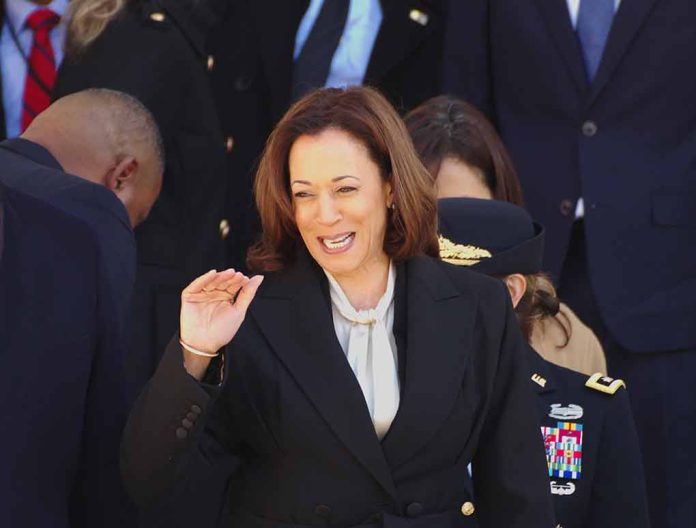
Vice President Kamala Harris unveils an “Opportunity Economy” plan, focusing on childcare costs and expanded child tax credits to bolster the middle class.
At a Glance
- Harris proposes capping childcare expenses at 7% of total income
- Plan includes revival of expanded child tax credit, offering $3,000 to $6,000 per child
- Economic strategy aims to lower living costs and create jobs
- Proposal faces potential challenges from both political parties
Harris’s Vision for an “Opportunity Economy”
Vice President Kamala Harris has introduced her “Opportunity Economy” plan, a comprehensive economic strategy aimed at strengthening the financial well-being of the middle class. The plan focuses on revising the tax code, lowering the cost of living, and addressing income inequality. Central to this proposal are two key components: a cap on childcare expenses and an expansion of the child tax credit.
Harris’s plan proposes to limit childcare costs to 7% of a family’s total income, a move aimed at making childcare more affordable and accessible. Additionally, the plan calls for the revival of the expanded child tax credit, offering between $3,000 and $6,000 per child. These measures are designed to provide immediate relief to families struggling with the rising costs of raising children.
Addressing Housing and Healthcare Costs
Beyond childcare and tax credits, the “Opportunity Economy” plan tackles other significant financial burdens faced by middle-class families. Harris proposes the construction of 3 million new housing units and the implementation of tax incentives for homebuilders to address the housing shortage. For first-time homebuyers, the plan offers $25,000 in downpayment support and a $10,000 tax credit.
“Costs are still too high. And on a deeper level, for too many people, no matter how much they work, it feels so hard to just be able to get ahead,” the candidate said in a speech delivered on the campaign trail in North Carolina in August. “As president, I will be laser-focused on creating opportunities for the middle class that advance their economic security, stability and dignity.” Source
In the healthcare sector, Harris’s plan aims to lower the cost of prescription drugs and cap out-of-pocket expenses. These measures are part of a broader strategy to reduce the financial strain on American families and increase economic stability.
Economic Growth and Job Creation
The “Opportunity Economy” plan emphasizes job creation and economic growth through various initiatives. Harris proposes supporting small businesses with tax breaks and incentives, as well as investments in Community Development Financial Institutions (CDFIs) to provide capital in underserved communities. The plan also includes measures to ban price gouging from grocery chains and end taxes on tips, a policy that aligns with some of her political opponents.
“Whether you live in a rural area, small town, or big city. And as president, I will bring together labor and workers and small-business owners and entrepreneurs and American companies to create jobs, to grow our economy and to lower the cost of everyday needs like health care and housing and groceries. We will provide access to capital for small-business owners and entrepreneurs and founders. And we will end America’s housing shortage, and protect Social Security and Medicare.” Source
Potential Challenges and Criticisms
While Harris’s plan addresses many pressing economic issues, it has faced criticism and potential challenges. Some economists have raised concerns about certain aspects of the plan, such as the proposal to ban price gouging. Carl Schramm, a professor at Syracuse, characterized such a proposal as “price controls,” warning that they could discourage investment in crucial sectors like housing.
Additionally, the plan’s ambitious scope and potential costs may face resistance from fiscal conservatives in both parties. Previous attempts at similar initiatives have encountered obstacles, particularly regarding funding and implementation.
Conclusion
Vice President Kamala Harris’s “Opportunity Economy” plan represents a comprehensive approach to addressing the economic challenges faced by middle-class Americans. By focusing on childcare costs, housing affordability, and job creation, the plan aims to provide both immediate relief and long-term economic stability. However, the success of this ambitious proposal will likely depend on its ability to navigate the complex political and economic landscape of the United States.









